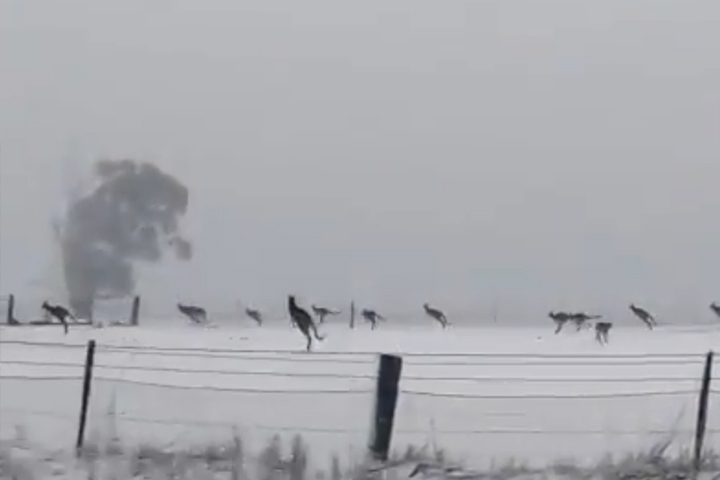Find Out Which Parts Get the Heaviest Snow In Australia During the Winter Months
Find Out Which Parts Get the Heaviest Snow In Australia During the Winter Months
Blog Article
Recognizing the Significance of Snow in Australia for Agriculture and Tourist
While Australia is frequently linked with sun-kissed beaches and arid wilderness, it likewise flaunts a riches of snowy towering areas. As we investigate this unexpected crossway, the prospective impact of shifting climate patterns on Australia's snowfall and its succeeding effects end up being a compelling emphasis.

The Unforeseen Snowfall: Australia's Alpine Regions
When winter months capes the world, Australia's Alpine areas don a white mantle of snow, a phenomenon that appears nearly paradoxical in this dominantly sun-baked land. Unlike the stereotypical picture of Australia as a land of beaches and deserts, these regions provide a stunning and unusual comparison. The Australian Alps, stretching across New South Wales, Victoria, and the Australian Resources Area, obtain more snowfall than Switzerland. This unforeseen wintertime paradise supplies an unique community, providing an environment for several indigenous species and a snowy playground for winter months sporting activities lovers. The annual snowfall, although not as plentiful as in some nations, is an essential aspect of Australia's climate diversity and plays a substantial duty in the country's agricultural methods and tourist market.
Winter season's Bounty: Snow's Payment to Australia's Water Resources
Regardless of its rarity in the broader landscape of Australia, snow in the Alpine areas plays an important function in the nation's water sources. This is especially vital for Australia, a continent regularly tormented by droughts. Without the bounty of winter snow, Australia's water resources would be considerably stressed, affecting both the atmosphere and the populace.
White Blanket, Eco-friendly Fields: The Impact of Snow on Australian Farming
Although much less noticeable, the impact of snow on Australian farming is significant. Snowfall in the high nation serves as a natural type of irrigation, progressively melting and offering a steady water system to lower-lying farmland. This water-rich environment fosters the growth of durable plants, adding to the country's farming productivity. Snowfall boosts soil wellness by introducing moisture and trapping nutrients, which are slowly released as the snow melts. This procedure enriches the soil, these details cultivating the development of healthier, extra resilient plants. Additionally, snow cover functions as a protective blanket, shielding the ground against severe wintertime temperature levels that could or else harm plants. Therefore, the function of snow in Australian farming is both diverse and essential.

Money: Snow Tourist and Its Economic Value in Australia
While the worth of snow to Australian agriculture is frequently underestimated, its payment to the country's tourist sector is undoubtedly substantial. The snow-laden peaks of Australia's towering areas draw in a flurry of tourists every winter, contributing millions to the national economic situation. These site visitors partake in a selection of snow-based activities, from snowboarding and snowboarding to snowshoeing and sledging. The read here growing snow tourist market has actually brought about the development of various jobs, from ski more tips here instructors to hotel personnel, reinforcing local economic situations at the same time. The revenue generated from snow tourist aids fund different infrastructure jobs and important solutions in these areas. Thus, the financial relevance of snow tourist in Australia extends much past the inclines.
Future Projection: Environment Change and Its Possible Impacts on Australia's Snowfall
As the globe faces the reality of environment adjustment, so too needs to Australia contemplate its prospective impacts on the nation's snowfall. Existing clinical designs predict a decrease in Australian snowfall, with potentially severe effect on both agriculture and tourism. In some locations, the snow period can be reduced by up to 80 days by 2050. Such changes threaten the stability of Australia's ski sector, which adds considerably to the local economic climate. In a similar way, much less snowfall can likewise affect the country's agricultural field, as snowmelt plays an important role in watering plants. The possible impacts of these modifications underscore the seriousness of climate modification reduction initiatives, both in Australia and internationally.
Verdict
In final thought, snow is a crucial component of Australia's agricultural and tourist sectors. The impending danger of climate change increases worries concerning the future of Australia's snowfall patterns, potentially disrupting these considerable financial sectors.

When winter capes the world, Australia's Alpine regions don a white mantle of snow, a spectacle that appears practically paradoxical in this dominantly sun-baked land.Regardless of its rarity in the more comprehensive landscape of Australia, snow in the Alpine areas plays an essential duty in the nation's water resources. Without the bounty of winter snow, Australia's water resources would certainly be dramatically stressed, affecting both the population and the setting.
Thus, the financial importance of snow tourist in Australia extends far past the slopes.
In final thought, snow is a crucial component of Australia's agricultural and tourism industries. Does Australia Get Snow.
Report this page